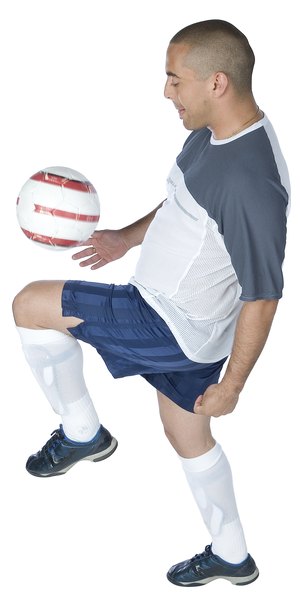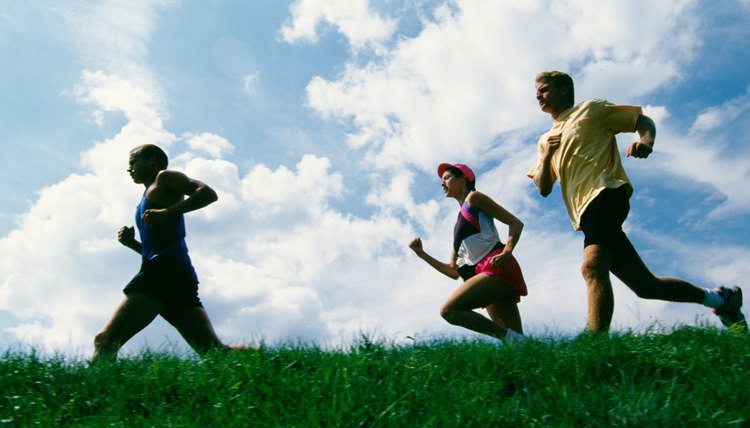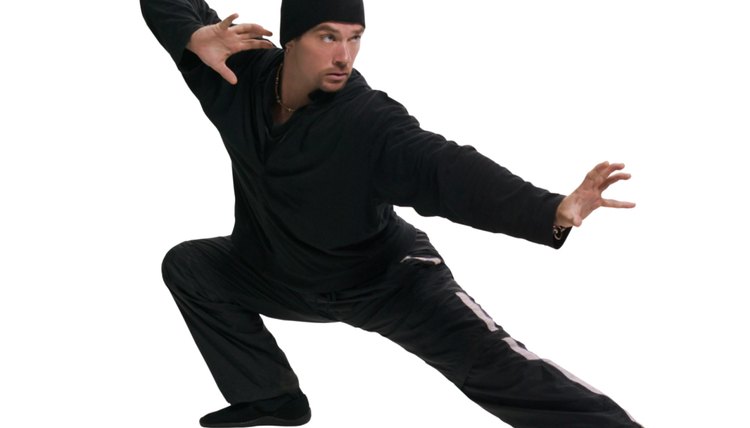Muscles That Cross the Knee Joint

Knees are complex joints that can take a beating in our daily activities, especially if you engage in athletic feats like marathon running. Often, people don’t think about their knees until they start to hurt. But knowledge of the knees' musculature can help you plan a conditioning program where you keep your muscles strong and in balance. If you are suffering from knee pain, a doctor or physical therapist can help you identify the cause and an exercise therapy plan.
Functions of the Knee

NA/PhotoObjects.net/Getty Images
Four bones come together at the knee: the tibia and fibula in the lower leg; the femur in the upper leg; and the patella, or knee cap. The muscles and tendons work together to bend and straighten -- or flex and extend -- the leg. Many daily activities, such as walking or running alternate between these two positions. A slight rotation is also part of this movement, but people often injure their knees by trying to rotate them too far.
Quadriceps
The quadriceps, located in the front of your thighs, are the knee’s primary extensors. These four muscles -- the rectus femoris, vastus lateralis, vastus medialis and vastus intermedius -- originate in different places and then cross the knee joint to meet at the patellar tendon. You feel the quadriceps in action during squats, bicycling, vertical jumping, climbing stairs or on the leg press machine.
Hamstrings

NA/PhotoObjects.net/Getty Images
The hamstrings are three muscles that run down the back of the leg to cross the knee joint. They work together to bend or flex the knee. The tendons of the semimembranosus and the semitendinosus insert on the medial side of the knee. These two muscles aid in the knee’s slight internal rotation. The biceps femoris is responsible for the knee’s slight external rotation. Its tendon inserts on the lateral side of the knee. You'll feel your hamstrings working in lunges and hamstring curls. These are long muscles that also act at the hip as extensors and rotators.
Other Important Knee Muscles
While the hamstrings and quadriceps are the muscles that cross the knee, they don’t act alone. The sartorius aids in flexion and internal rotation of the knee. The gracilis, mainly known for hip adduction, also contributes to flexion. The popliteus serves an especially important function. When you first stand up after sitting for a while, this small muscle internally rotates to unlock the knee so you can take a step.
Tips
While the knees are designed to take a certain amount of impact, be careful with them. You might want to try cross-training -- alternating a high-impact exercise, such as running, with lower impact cycling, rowing or swimming. Be careful of your knee alignment. When doing squats, keep your weight in your heels and hinge at the hips first, not the knees. In plie squats, keep your knees aligned with your second toes.
References
- IDEA Fitness Journal: The Knee Joint
- Center for Orthopedics and Sports Medicine: The Knee Joint
- Jonathan L Glashow MD: Knee Structure
- American Council on Exercise’s Essentials of Exercise Science for Fitness Professionals, 2010
Writer Bio
Teresa Bergen writes about fitness, health, yoga, travel and the arts. She is the author of "Vegetarian Asia Travel Guide" and has written hundreds of articles for publications online and off. Bergen also teaches yoga, spinning and group fitness classes, and is an ACE-certified personal trainer.
